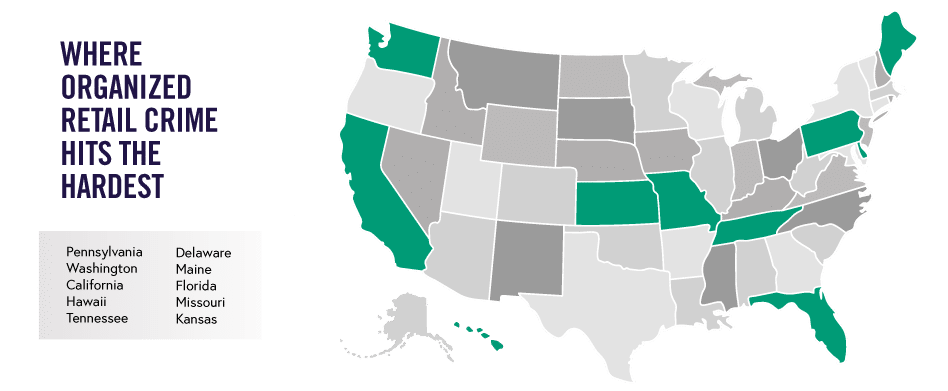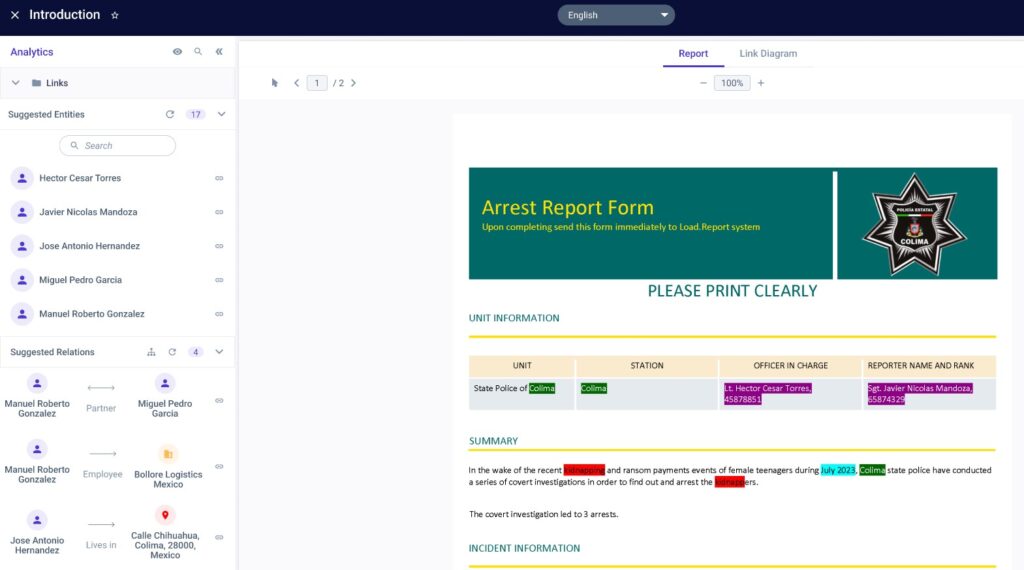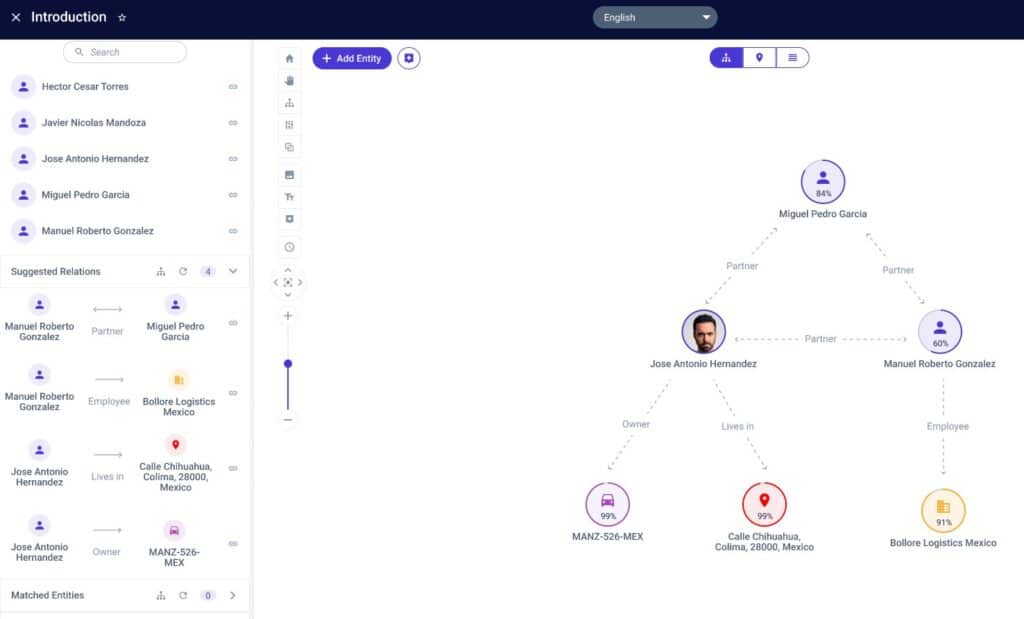Combatting Organized Retail Crime with Decision Intelligence

Organized retail crime has become a nationwide epidemic in the United States, costing retailers an estimated $112 billion in 20221. Criminals have become more brazen, with some resorting to violence and endangering both customers and store employees. Beyond the immediate impact on retailers, organized retail crime has broader societal consequences, as retail crime networks often have connections to other criminal activities such as narcotics trafficking, money laundering, and human trafficking. While some organized retail crime networks operate on a relatively localized scale, many others are part of transnational schemes often connected to larger criminal organizations. The merchandise involved in retail crime networks has been known to include almost any goods that can be re-sold for a profit, from clothing, cosmetics, luxury goods, and even home improvement products2.
What is organized retail crime?
Recently, the problem has escalated, with 80% of US retailers reporting an increase in stolen merchandise in 2022. Mexican cartels have played a significant role in the surge of organized retail crime, operating at every level of the process, according to the Homeland Security Investigations unit of the Department of Homeland Security. The consequences extend beyond financial losses, affecting federal and state governments, which lose tax revenue, and ordinary families who may face higher costs for goods due to increased prices resulting from stolen merchandise.
Law enforcement faces challenges in tackling organized retail crime due to the perception that shoplifting is a non-serious and non-violent offense. State laws, such as California’s Prop 47, contribute to this problem by categorizing such crimes as non-serious, allowing offenders to evade significant consequences. This failure to address the severity of organized retail crime enables criminal organizations to exploit legal gaps and continue their illicit activities.

Source: https://www.buysafeamerica.org/what-is-organized-retail-crime
How does organized retail crime typically work?
Unlike shoplifting, which is perpetrated by individuals in isolated incidents, organized retail crime is perpetrated by theft groups, known as “boosters,” which systematically target retail establishments across the country. These boosters operate in crews, using aliases, rental vehicles, special equipment like “booster bags”, and illegally acquired security keys to steal high-value merchandise.
Once stolen, goods are handed over to a “fencer” or “fence,” who purchases the items from boosters at discounted rates. Fencers employ various tactics to conceal the stolen nature of the merchandise, such as using lighter fluid and heat guns to remove anti-theft stickers. The illicitly acquired items are then listed on multiple platforms, including e-commerce websites like eBay and Amazon, social media, and wholesale or trading companies. The goods may ultimately be shipped overseas in cargo containers for sale.
Certain U.S. states, such as Kansas and Missouri, find themselves among the top 10 most affected by organized retail crime due to their strategic locations. Kansas Attorney General Kris Kobach notes a link between drug trafficking and retail crime, as drug-addicted individuals may turn to boosting to sustain their habits. Boosters typically steal amounts below the felony threshold, often using tactics like “pushouts” or “rollouts”, throwing items in a cart or large bag and walking or running out of the store, to escape stores without interference. The frequency and brazenness of these thefts contribute to increased violence, with boosters assaulting store personnel who attempt to intervene, creating a significant challenge for law enforcement and retailers.
What tools is law enforcement missing in order to fight organized retail crime?
Many law enforcement agencies are missing the tools necessary to pick up on complex, organized crimes like organized retail crime, which involve many steps and make use of sophisticated tactics to evade authorities and “fly under the radar” of law enforcement. In order to detect activities related to organized retail crime. law enforcement agencies require tools with the ability to fuse massive amounts of data from a wide range of sources, as well as the ability to analyze the data effectively to pick up on hidden connections and patterns critical for extracting data-driven insights.
Unfortunately, too many law enforcement organizations rely on outdated tools that hinder their investigations, and keep critical insights out of reach, even when the raw data is available. In fact, according to a recent study, 80% of chief investigators admit to having challenges when it comes to data fusion for investigation purposes, and 31% of law enforcement agencies are missing AI and machine learning capabilities to predict potential threats.

How can decision intelligence help?
Decision intelligence platforms empower authorities with advanced analytics and AI to fuse and analyze massive amounts of data, generate data-driven insights and accelerate investigative decision-making. The following are some of the most critical capabilities:
- Data fusion can help law enforcement to aggregate all available sources, no matter the format or type, to provide a single, unified view of all investigation data. By connecting data such as security camera (CCTV) footage, criminal records, financial transactions, police reports of thefts, open-source intelligence from websites like online shopping sites, and social media video, images, and posts, investigators can gain a deep understanding of individuals and entities involved in organized retail crime. This facilitates investigations, and allows investigators and law enforcement to make the most of available data.
- By harnessing advanced AI enrichment, like face matching, video analytics, and image recognition, decision intelligence platforms allow law enforcement to analyze suspicious images and video footage from diverse platforms, including online shopping sites, social media, and in-store security camera footage. By matching suspicious images and video footage of suspects with known entities within an agency’s existing database, law enforcement can effectively identify perpetrators, determine who is behind the theft, and uncover suspicious connections between suspects. In some cases, it is possible to track stolen objects and uncover attempts to re-sell them via social media, online marketplaces, or brick-and-mortar shops.
- AI-driven inferred relations from images or text enable law enforcement to uncover hidden relations that connect between thief and seller, as well as reveal the modus operandi of the organized retail crime network. This helps investigators to uncover relations that they wouldn’t be able to detect otherwise. For example, most stores have CCTV systems that may capture images and video footage of suspects involved in a theft. As the thief may not be the reseller, leveraging both inferred and confirmed associations to other entities within the law enforcement database can help to determine the scale of the criminal operations, as well as key players within the larger criminal network.


Inferred relations
- Data visualization, including visual link analysis (VLA), timeline analysis, and geospatial analysis, can significantly accelerate investigations by providing a visual representation of data relevant to the investigation, allowing investigators to uncover hidden connections and reveal critical details of the organized crime network in order to disrupt the criminal operations. Data visualization facilitates the extraction of actionable insights from investigation data based on network intelligence, HUMINT, and other sources, such as criminal records. VLA allows investigators to easily view connections between suspects and larger criminal networks, and determine whether a suspect is acting alone, or as part of an organized crime network. Timeline analysis enables law enforcement to see a visual representation of activities and events in chronological order on a unified investigation timeline, helping to reveal patterns and track criminal operations. Geospatial analysis helps investigators to map out locations relevant to the investigation, in order to reveal the modus operandi of criminals involved, and locate suspects.
Click here to learn more about how decision intelligence can accelerate your organized crime investigations.
Sources: